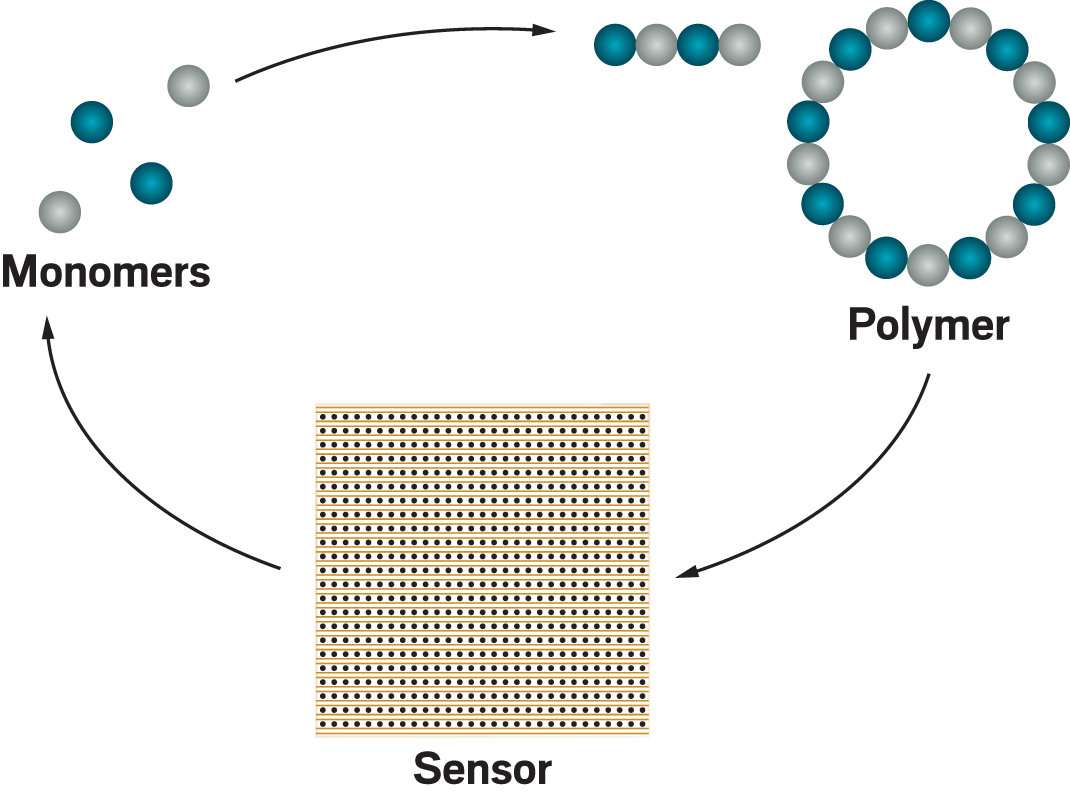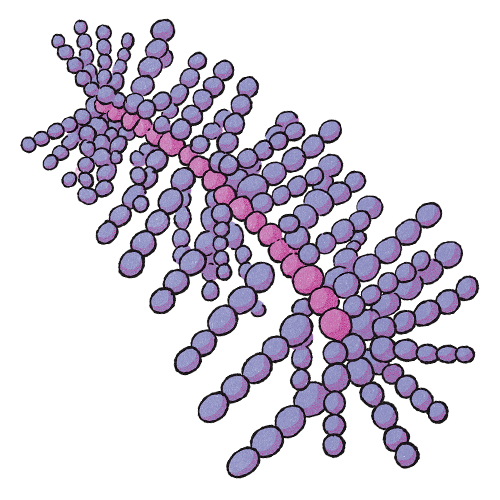Advertisement
Grab your lab coat. Let's get started
Welcome!
Welcome!
Create an account below to get 6 C&EN articles per month, receive newsletters and more - all free.
It seems this is your first time logging in online. Please enter the following information to continue.
As an ACS member you automatically get access to this site. All we need is few more details to create your reading experience.
Not you? Sign in with a different account.
Not you? Sign in with a different account.
ERROR 1
ERROR 1
ERROR 2
ERROR 2
ERROR 2
ERROR 2
ERROR 2
Password and Confirm password must match.
If you have an ACS member number, please enter it here so we can link this account to your membership. (optional)
ERROR 2
ACS values your privacy. By submitting your information, you are gaining access to C&EN and subscribing to our weekly newsletter. We use the information you provide to make your reading experience better, and we will never sell your data to third party members.
Polymers
Helen Tran
This polymer designer creates biocompatible, biodegradable materials for sensors
by Sam Lemonick, special to C&EN
July 15, 2022
| A version of this story appeared in
Volume 100, Issue 25

Credit: Will Ludwig/C&EN/Tim Peacock/Helen Tran
For the longest time, Helen Tran didn’t feel a strong pull toward chemistry. Art was her passion. She even remembers how in middle school, she was a teaching assistant for a chemistry class, but she always tried to finish her grading early so she could go work in the art studio next door.
The turning point was her first undergraduate organic chemistry course. The material spoke to Tran’s instinct for visualization. Then a polymer chemistry class appealed to her love for building things. Those courses solidified her path in chemistry. Now she calls herself a molecular architect: she designs and makes stretchable, biodegradable electronic materials with her group at the University of Toronto.
Advertisement
“She really wants to work at this interface of disciplines between chemistry, polymer science, biology, and materials,” says polymer chemist Ron Zuckermann of Lawrence Berkeley National Laboratory, where Tran worked before starting her PhD.
Tran’s group in Toronto has explored novel materials, including peptide-like polymers called peptoids that self-assemble into nanomaterials; polymers that can be made from crops and other renewable sources; and soft, flexible bottlebrush polymers. The team’s goal is to use innovative materials to make polymer semiconductors that can flex and bend and may one day be used in sensors inside the body or in environmental or agricultural applications. Also, because many of these materials are biodegradable, these devices could break down before they contribute to the global plastic pollution problem.
Tran can navigate these multiple fields because of her powers of insight, according to her mentors. Her PhD adviser, Columbia University polymer chemist Luis Campos, likens her to a telescope because she can see far beyond the immediate issue at hand to find the next functional group for a polymer, always keeping the project’s larger goals in mind. “If you’re having a discussion about science, strategy, you name it, she’s able to take that information, synthesize it,” he says.
Tran’s mentors also recognize her talent for building community within research groups and training other researchers. “She really stood out in terms of how to not only carry out research but to also help other students to be successful,” says materials scientist Zhenan Bao of Stanford University, who was Tran’s postdoc adviser.
Mentoring continues to be a priority for Tran. When she started her research group in 2021, she set her trainees’ success as the most important metric of her own success as a principal investigator. Tran knows many things will compete for her time and attention, but she intends to make mentoring a priority.
Tran’s love of art has helped guide her chemistry career. She says that when she was younger, she didn’t think an art career was open to her. She finds art where she can, such as her architectural approach to polymers. And she has personal art projects, including a preserved-moss wall hanging for her office.
Tran uses Twitter as an avenue for outreach to other scientists and the public. She also demonstrated how to make color-changing slime for Camp GoldieBlox, a show for kids developed with comedian Amy Poehler’s Smart Girls organization. As an If/Then ambassador for the American Association for the Advancement of Science, Tran, encouraged girls’ interest in science, technology, engineering, and mathematics.
Outreach is important to Tran because when she was young, she didn’t have anyone who could show her how to be a scientist. Her parents were immigrants without a lot of resources, Tran says. The family of four shared a one-bedroom apartment in San Jose, California, until she was in high school. Now she wants to provide others with the opportunities she didn’t have. For example, she is planning a project to build science experiment kits that kids can do at home. Her challenge is determining how to make something that 5-year-old Helen could have done. “Making science accessible is really important to me because of how I grew up,” she says.

Vitals
Current affiliation: University of Toronto
Age: 34
PhD alma mater: Columbia University
Hometown: San Jose, California
If I were an element, I'd be: “Sulfur because it’s essential to our bodies, life, and organic electronics. . . . Plus, it’s a bit funky.”
My alternate-universe career: “If I had the courage to risk economic stability when I was younger, I would have pursued a career as an artist.”
See the Talented 12 present their work at a virtual symposium Sept. 19, 20, and 21. Register for free at cenm.ag/t12symposium.

|

|
For the longest time, Helen Tran didn’t feel a strong pull toward chemistry. Art was her passion. She even remembers how in middle school, she was a teaching assistant for a chemistry class, but she always tried to finish her grading early so she could go work in the art studio next door.
Vitals
▸ Current affiliation: University of Toronto
▸ Age: 34
▸ PhD alma mater: Columbia University
▸ Hometown: San Jose, California
▸ If I were an element, I’d be: “Sulfur because it’s essential to our bodies, life, and organic electronics. . . . Plus, it’s a bit funky.”
▸ My alternate-universe career: “If I had the courage to risk economic stability when I was younger, I would have pursued a career as an artist.”
The turning point was her first undergraduate organic chemistry course. The material spoke to Tran’s instinct for visualization. Then a polymer chemistry class appealed to her love for building things. Those courses solidified her path in chemistry. Now she calls herself a molecular architect: she designs and makes stretchable, biodegradable electronic materials with her group at the University of Toronto.
“She really wants to work at this interface of disciplines between chemistry, polymer science, biology, and materials,” says polymer chemist Ron Zuckermann of Lawrence Berkeley National Laboratory, where Tran worked before starting her PhD.
Tran’s group in Toronto has explored novel materials, including peptide-like polymers called peptoids that self-assemble into nanomaterials; polymers that can be made from crops and other renewable sources; and soft, flexible bottlebrush polymers. The team’s goal is to use innovative materials to make polymer semiconductors that can flex and bend and may one day be used in sensors inside the body or in environmental or agricultural applications. Also, because many of these materials are biodegradable, these devices could break down before they contribute to the global plastic pollution problem.
Tran can navigate these multiple fields because of her powers of insight, according to her mentors. Her PhD adviser, Columbia University polymer chemist Luis Campos, likens her to a telescope because she can see far beyond the immediate issue at hand to find the next functional group for a polymer, always keeping the project’s larger goals in mind. “If you’re having a discussion about science, strategy, you name it, she’s able to take that information, synthesize it,” he says.
Tran’s mentors also recognize her talent for building community within research groups and training other researchers. “She really stood out in terms of how to not only carry out research but to also help other students to be successful,” says materials scientist Zhenan Bao of Stanford University, who was Tran’s postdoc adviser.
Mentoring continues to be a priority for Tran. When she started her research group in 2021, she set her trainees’ success as the most important metric of her own success as a principal investigator. Tran knows many things will compete for her time and attention, but she intends to make mentoring a priority.
Tran’s love of art has helped guide her chemistry career. She says that when she was younger, she didn’t think an art career was open to her. She finds art where she can, such as her architectural approach to polymers. And she has personal art projects, including a preserved-moss wall hanging for her office.
Tran uses Twitter as an avenue for outreach to other scientists and the public. She also demonstrated how to make color-changing slime for Camp GoldieBlox, a show for kids developed with comedian Amy Poehler’s Smart Girls organization. As an If/Then ambassador for the American Association for the Advancement of Science, Tran, encouraged girls’ interest in science, technology, engineering, and mathematics.
Outreach is important to Tran because when she was young, she didn’t have anyone who could show her how to be a scientist. Her parents were immigrants without a lot of resources, Tran says. The family of four shared a one-bedroom apartment in San Jose, California, until she was in high school. Now she wants to provide others with the opportunities she didn’t have. For example, she is planning a project to build science experiment kits that kids can do at home. Her challenge is determining how to make something that 5-year-old Helen could have done. “Making science accessible is really important to me because of how I grew up,” she says.




















Join the conversation
Contact the reporter
Submit a Letter to the Editor for publication
Engage with us on Twitter